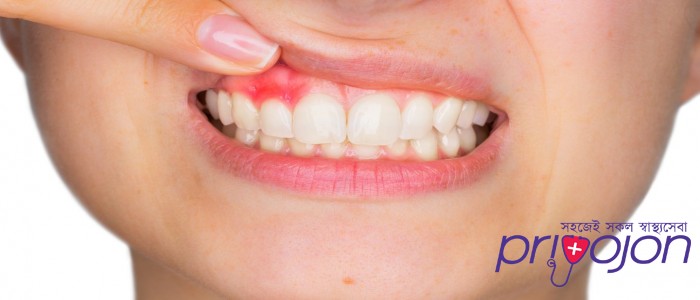
Overview
Medically reviewed by Dr. Rabeya Afroz Shomi
What is gingivitis?
Risk factors for gingivitis and periodontitis
What are the symptoms of gingivitis and periodontitis?
How is gum disease diagnosed?
How is gum disease treated?
Cleaning teeth
Medications
How can gum disease be prevented?
Health conditions associated with gum disease
What is gingivitis?
Gingivitis is an inflammation of the gums, usually caused by a bacterial infection. If left untreated, it can become a more serious infection known as periodontitis.
Gingivitis and periodontitis are major causes of tooth loss in adults, according to the American Dental Association. Dental infections can add up, with both your health and your wallet at stake.
According to the Centers for Medicare & Medicaid Services, Americans spent an estimated $129 billion on dental services in 2017.
Risk factors for gingivitis and periodontitis
The following are risk factors for gingivitis and periodontitis:
1. smoking or chewing tobacco
2. diabetes
3. consuming certain medications such as oral contraceptives, steroids, anticonvulsants, calcium channel blockers, and chemotherapy
4. crooked teeth
5. dental appliances that fit poorly
6. broken fillings
7. pregnancy
8. genetic factors
9. compromised immunity such as with HIV/AIDS
What are the symptoms of gingivitis and periodontitis?
Many people aren’t aware that they have gum disease. It’s possible to have gum disease without any symptoms. However, the following can be symptoms of gum disease:
1. gums that are red, tender, or swollen
2. gums that bleed when you brush or floss your teeth
3. gums that have pulled away from the teeth
4. loose teeth
5. a change in how your teeth fit together when you bite (malocclusion)
6. pus between teeth and gums
7. pain when chewing
8. sensitive teeth
9. partial dentures that no longer fit
10. foul-smelling breath that doesn’t go away after you brush your teeth
How is gum disease diagnosed?
During a dental exam, your gums will be probed with a small ruler. This probing is a way to check for inflammation. It also measures any pockets around your teeth. A normal depth is 1 to 3 millimeters. Your dentist may also order X-rays to check for bone loss.
Talk to your dentist about risk factors for gum disease as well as your symptoms. This can help diagnose your gingivitis. If gingivitis is present, you may be referred to a periodontist. A periodontist is a dentist who specializes in the treatment of gum diseases.
How is gum disease treated?
You must practice proper oral hygiene to treat gingivitis. You should also cut back on any smoking, if you smoke, and manage your diabetes. Other treatments include:
1. deep cleaning your teeth
2. antibiotic medications
3. surgery
Cleaning teeth
There are several techniques that can be used to deep clean your teeth without surgery. They all remove plaque and tarter to prevent gum irritation:
1. Scaling removes tartar from above and below the gum line.
2. Root planing smooths rough spots and removes plaque and tartar from the root surface.
3. Lasers may remove tartar with less pain and bleeding than scaling and root planing.
Medications
A number of medications can be used to treat gum disease:
1. Antiseptic mouthwash containing chlorhexidine can be used to disinfect the mouth.
2. Timed-release antiseptic chips containing chlorhexidine can be inserted into pockets after root planing.
3. Antibiotic microspheres made with minocycline can be inserted into pockets after scaling and planing.
4. Oral antibiotics can be used to treat persistent areas of gum inflammation.
5. Doxycycline, an antibiotic, can help keep enzymes from causing tooth damage.
6. Flap surgery is a procedure where the gums are lifted back while plaque and tartar is removed from deeper pockets. The gums are then sutured in place to fit snugly around the tooth.
7. Bone and tissue grafts can be used when teeth and jaw are too damaged to heal.
How can gum disease be prevented?
Proper and consistent oral hygiene can prevent gum disease. This includes:
1. visiting the dentist regularly
2. brushing your teeth twice daily with fluoride toothpaste
3. flossing your teeth every day
Eating a balanced diet is also important to achieving and maintaining good dental health.
Health conditions associated with gum disease
The Centers for Disease Control and PreventionTrusted Source and the National Institute of Dental and Craniofacial Research report that periodontal disease is associated with an increased risk for:
1. diabetes
2. heart disease
3. stroke
4. lung disease
It also increases the risk of a woman giving birth to a premature or low birth weight infant.
Although gum disease is associated with these health conditions, it hasn’t been shown to cause them. More research is needed to determine the specifics of this association.
